Daily life in Xinjiang's Kashgar
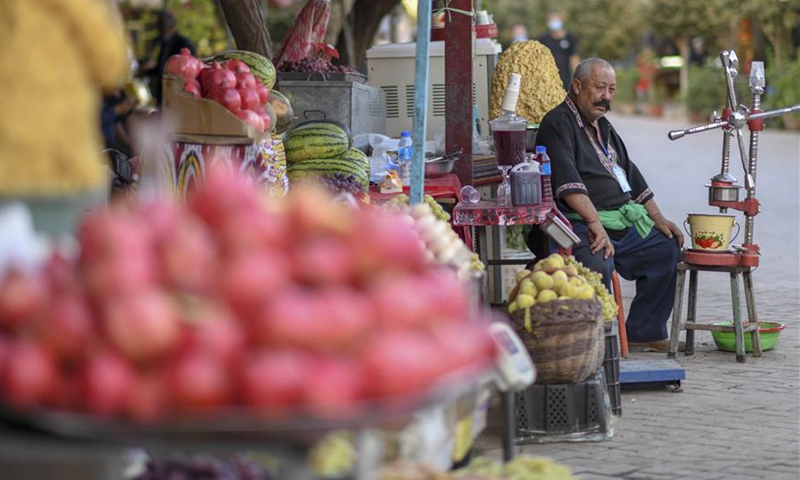
A vendor waits for customers in the ancient city of Kashgar, northwest China's Xinjiang Uygur Autonomous Region, Sept. 22, 2020. Since Xinjiang resumed trans-provincial tours in September, the tourism industry of the ancient city of Kashgar has quickly recovered. In 2010, a renovation project worthing 7 billion yuan (about 1 billion U.S. dollars) kicked off in the ancient city of Kashgar, enabling residents to enjoy the convenience of modern life while retaining their traditional lifestyles. Some best-sellers like homestay, handicrafts and local specialties bring a constant flow of tourists to experience the charm of the ancient city. (Xinhua/Zhao Ge)

Residents have fun in the ancient city of Kashgar, northwest China's Xinjiang Uygur Autonomous Region, Sept. 20, 2020. Since Xinjiang resumed trans-provincial tours in September, the tourism industry of the ancient city of Kashgar has quickly recovered. In 2010, a renovation project worthing 7 billion yuan (about 1 billion U.S. dollars) kicked off in the ancient city of Kashgar, enabling residents to enjoy the convenience of modern life while retaining their traditional lifestyles. Some best-sellers like homestay, handicrafts and local specialties bring a constant flow of tourists to experience the charm of the ancient city. (Xinhua/Zhao Ge)
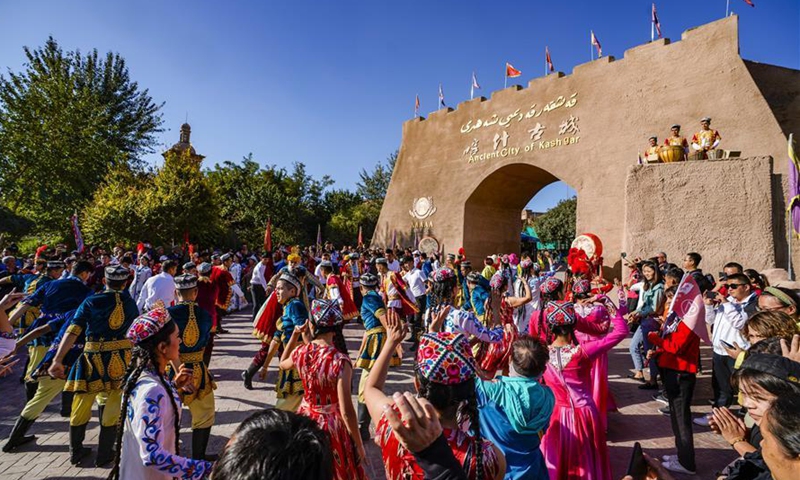
People participate in the shooting of a TV series in the ancient city of Kashgar, northwest China's Xinjiang Uygur Autonomous Region, Sept. 20, 2020. Since Xinjiang resumed trans-provincial tours in September, the tourism industry of the ancient city of Kashgar has quickly recovered. In 2010, a renovation project worthing 7 billion yuan (about 1 billion U.S. dollars) kicked off in the ancient city of Kashgar, enabling residents to enjoy the convenience of modern life while retaining their traditional lifestyles. Some best-sellers like homestay, handicrafts and local specialties bring a constant flow of tourists to experience the charm of the ancient city. (Xinhua/Zhao Ge)
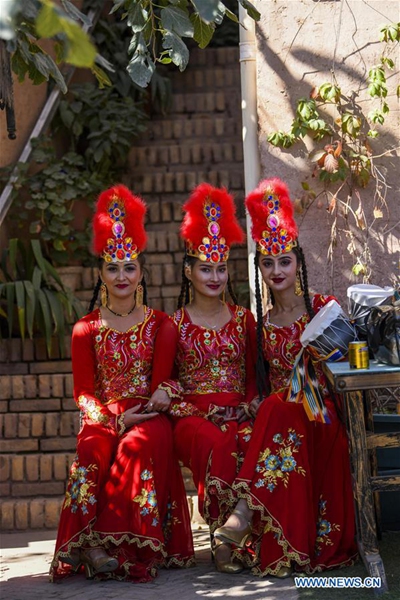
Performers of TV series pose for a photo in the ancient city of Kashgar, northwest China's Xinjiang Uygur Autonomous Region, Sept. 20, 2020. Since Xinjiang resumed trans-provincial tours in September, the tourism industry of the ancient city of Kashgar has quickly recovered. In 2010, a renovation project worthing 7 billion yuan (about 1 billion U.S. dollars) kicked off in the ancient city of Kashgar, enabling residents to enjoy the convenience of modern life while retaining their traditional lifestyles. Some best-sellers like homestay, handicrafts and local specialties bring a constant flow of tourists to experience the charm of the ancient city. (Xinhua/Zhao Ge)
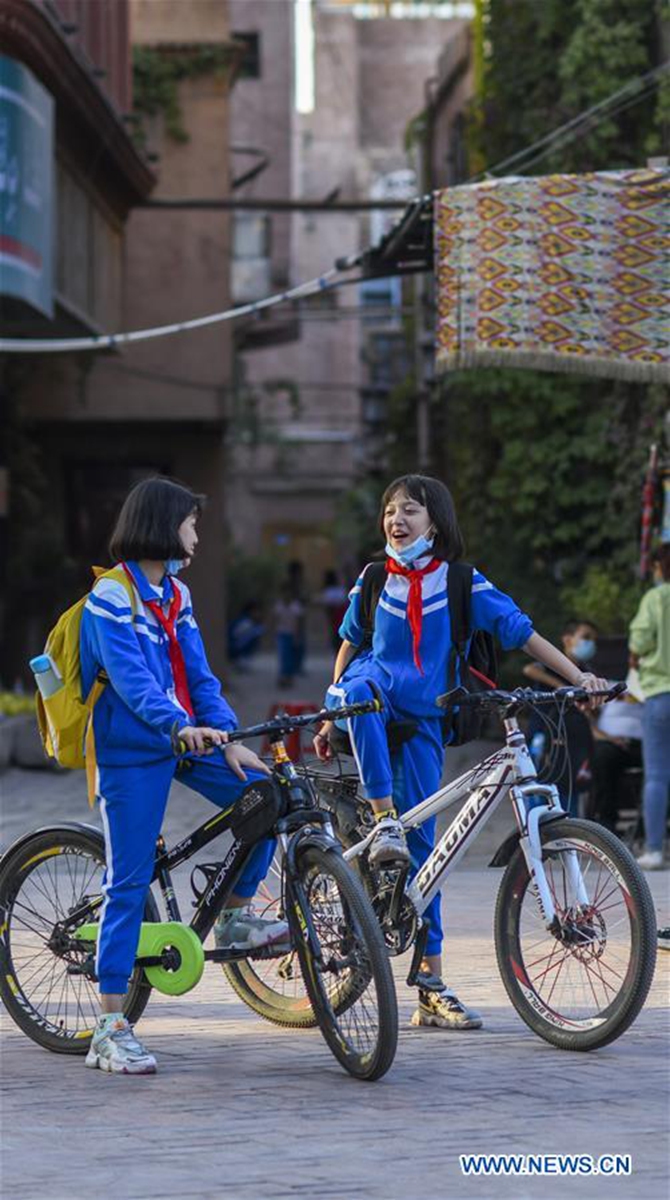
Two students chat in the ancient city of Kashgar, northwest China's Xinjiang Uygur Autonomous Region, Sept. 22, 2020. Since Xinjiang resumed trans-provincial tours in September, the tourism industry of the ancient city of Kashgar has quickly recovered. In 2010, a renovation project worthing 7 billion yuan (about 1 billion U.S. dollars) kicked off in the ancient city of Kashgar, enabling residents to enjoy the convenience of modern life while retaining their traditional lifestyles. Some best-sellers like homestay, handicrafts and local specialties bring a constant flow of tourists to experience the charm of the ancient city. (Xinhua/Zhao Ge)
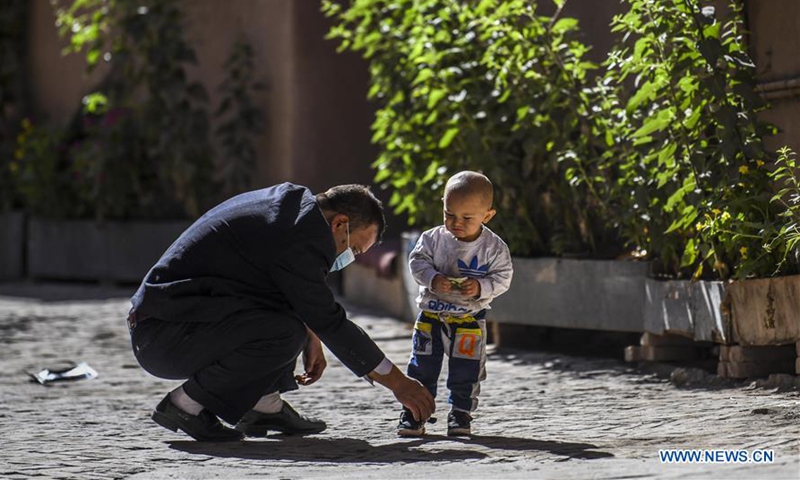
A man laces a child's shoes at an alley in the ancient city of Kashgar, northwest China's Xinjiang Uygur Autonomous Region, Sept. 20, 2020. Since Xinjiang resumed trans-provincial tours in September, the tourism industry of the ancient city of Kashgar has quickly recovered. In 2010, a renovation project worthing 7 billion yuan (about 1 billion U.S. dollars) kicked off in the ancient city of Kashgar, enabling residents to enjoy the convenience of modern life while retaining their traditional lifestyles. Some best-sellers like homestay, handicrafts and local specialties bring a constant flow of tourists to experience the charm of the ancient city. (Xinhua/Zhao Ge)